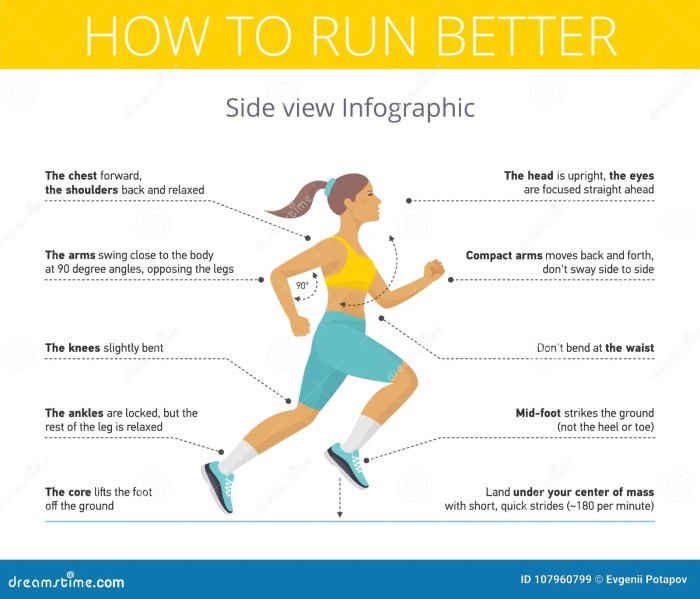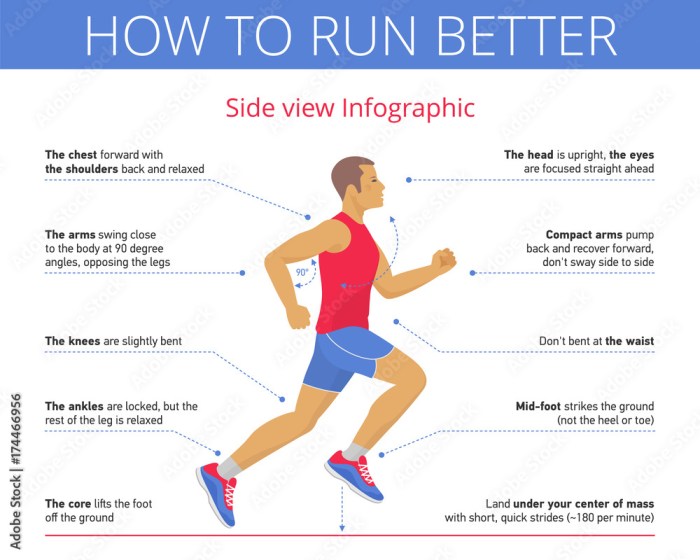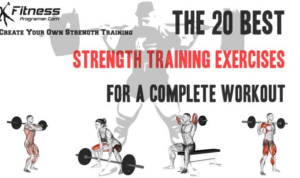Running Techniques: Maximize Performance and Prevent Injuries. Lace up your sneakers and get ready to dive into the world of running techniques that can take your game to the next level. From proper foot strikes to the importance of arm positioning, we’ll explore it all in this hip and engaging discussion.
Whether you’re a seasoned runner or just starting out, understanding the intricacies of running techniques is key to improving your performance and avoiding injuries. Let’s hit the track and uncover the secrets to running like a pro.
Importance of Running Techniques

Proper running techniques play a crucial role in preventing injuries and maximizing performance and endurance. When runners maintain correct form, they reduce the risk of strains, sprains, and other common running-related injuries. By focusing on technique, athletes can also improve their efficiency, leading to enhanced speed, stamina, and overall running experience.
Injury Prevention
- Proper running form helps distribute impact evenly, reducing strain on joints and muscles.
- Correct posture and foot strike can prevent overuse injuries like shin splints and stress fractures.
- Engaging core muscles and maintaining a neutral spine can prevent back pain and other discomforts.
Performance and Endurance
- Efficient running techniques optimize energy expenditure, enabling runners to go further and faster.
- Focus on form can lead to better running economy, allowing athletes to sustain pace for longer durations.
- Improving stride length and cadence through proper technique can enhance overall performance and race times.
Impact of Incorrect Form
- Running with improper technique can lead to muscle imbalances and compensations, increasing the risk of injury.
- Bad form may result in decreased efficiency, causing fatigue to set in sooner during runs.
- Incorrect foot strike or posture can negatively impact running gait and overall biomechanics.
Common Running Techniques

When it comes to running techniques, there are several key factors to consider in order to optimize your performance and prevent injuries. Let’s explore some of the common running techniques that can help you become a better runner.
Types of Foot Strikes
- Heel Strike: This is when your heel makes initial contact with the ground. It may lead to more impact on your joints and muscles.
- Midfoot Strike: In this type, the middle part of your foot lands first, providing a more balanced distribution of impact.
- Forefoot Strike: Here, the ball of your foot touches the ground first, promoting a more efficient running form.
Overstriding vs. Proper Stride Length, Running techniques
- Overstriding: This occurs when your foot lands too far in front of your body, leading to braking forces and potential injuries.
- Proper Stride Length: Maintaining an optimal stride length helps in maximizing efficiency and reducing the risk of overuse injuries.
Arm Positioning and Posture
- Proper arm positioning involves keeping your elbows at a 90-degree angle and swinging them front to back, not side to side.
- Good posture, with a slight forward lean from the ankles, helps in aligning your body for better balance and propulsion.
Training Drills and Exercises: Running Techniques
When it comes to improving your running performance, incorporating specific training drills and exercises can make a significant difference. These activities focus on enhancing your cadence, stride rate, strength, and overall running form.
Drills to Improve Cadence and Stride Rate
- High Knees: Lift your knees high with each stride, focusing on quick turnover.
- Butt Kicks: Kick your heels up towards your glutes while maintaining a forward motion.
- Fast Feet: Practice quick, light steps to improve foot turnover rate.
Hill Workouts for Strength and Form Improvement
Hill workouts are excellent for building leg strength and enhancing running form. Running uphill challenges your muscles and improves your power output.
Exercises to Strengthen Key Muscles
- Quads: Squats, lunges, and leg extensions target the quadriceps.
- Hamstrings: Deadlifts, hamstring curls, and bridges help strengthen the hamstrings.
- Calves: Calf raises, jump squats, and box jumps are effective for calf muscle development.
- Core: Planks, Russian twists, and bicycle crunches engage the core muscles essential for stability and balance.
Biomechanics of Running
When it comes to running, understanding the biomechanics is crucial for maximizing performance and preventing injuries. By focusing on proper alignment and utilizing the right footwear, runners can optimize their biomechanics for a more efficient and effective running technique.
Efficient Running Techniques
- Proper alignment of the body, including maintaining a straight posture and engaging core muscles, can help reduce unnecessary strain on joints and muscles.
- Optimal foot strike patterns, such as landing midfoot or forefoot rather than heel striking, can also improve running efficiency and reduce impact on the body.
- Arm swing coordination and cadence play a crucial role in balancing the body and generating power during each stride.
Impact of Proper Alignment
- Correct alignment can lead to a more fluid running motion, minimizing energy wastage and enhancing overall speed and endurance.
- Improper alignment, on the other hand, can result in overuse injuries, muscle imbalances, and decreased running performance.
- By focusing on maintaining proper alignment through strength training and flexibility exercises, runners can improve their biomechanics and reduce the risk of injury.
Role of Footwear
- Choosing the right running shoes that provide adequate support, cushioning, and stability can help maintain proper biomechanics and reduce the risk of injury.
- Footwear with features like arch support, shock absorption, and pronation control can address individual biomechanical needs and enhance running efficiency.
- Regularly replacing worn-out shoes is essential to ensure optimal support and prevent biomechanical issues that can arise from worn-out cushioning or improper fit.
